Jack’s Wartime Photo Collection
Most museums are very good at collecting, caring for, and displaying objects; however, many museums, including the RCA Museum, struggle to identify the human element or stories behind each artifact. When artifacts enter a museum through the accessioning process, staff sometimes do not take the time to collate the shared experiences or notable stories that make the artifact meaningful. We need to share authentic stories, which may change how we interpret the past.
Our museum is full of Canadian Gunner-related historical photos and artifacts. Each Gunner had unique stories in the RCA; however, many of these experiences overlap and become similar experiences and stories. I recently came across one anonymous photo collection, part of a large donation from the 77th Battery Association back in the 1990s. The 77th Battery was part of the 3rd Field Regiment, with the 1st Canadian Infantry Division and the First Canadian Army during WW2.
The unidentified photo collection consists of dozens of photos from two Canadian Gunners. Our accessioning records revealed that in 1996, museum curators removed the images from a deteriorating photo album but could not locate the names of the two soldiers. Unfortunately, most of our archives do not include precise details on the Canadian Gunners in the photographs. I decided to research the collection, determine the names of the Gunners, and locate shared experiences and stories during WW2.
The Gunner in the photograph on the right was Sergeant Jack Anderson from Colborne, Ontario. I matched his photo with a 77th Battery unit photo in our archives. Also, the second Gunner on the left was Bombardier (Sam) H. A. Myles, whom I traced through the 3rd Field Regimental history. Both men were part of the 3rd Field Regiment and 1st Canadian Infantry Division. Sergeant Jack Anderson and Bombardier Sam Myles shared a family connection; Jack married Sam’s sister, making them brothers-in-law. Jack sent most of the photos and postcards to his wife, Sam’s sister. Note the picture of Sam and Jack, captioned: “Likely you know these two, love – Jack XXXX.”

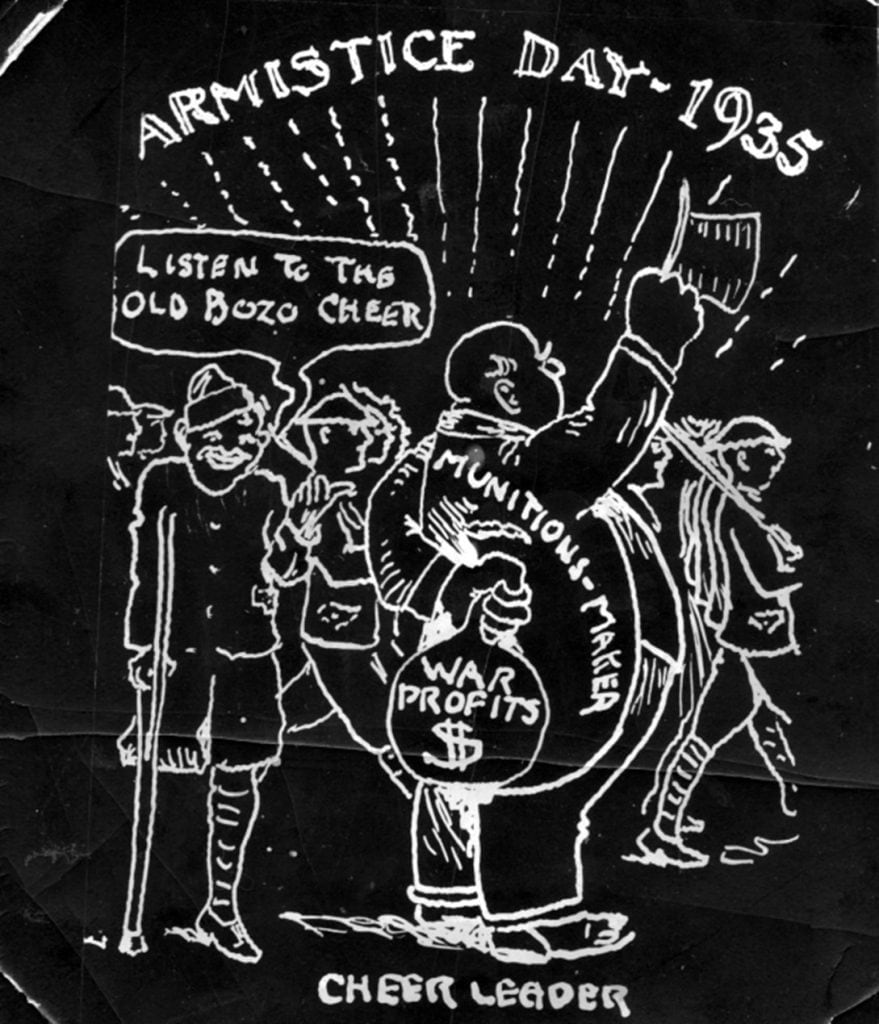
The collection includes many images that were common to other Canadian soldiers. For example, it contains a published cartoon about Armistice Day 1935, portraying a WW1 veteran joking about politicians who supported ammunition manufacturers that profited from warfare, shown to the left. Likely, Sgt Anderson saved the cartoon for posterity. The Canadian government passed the Armistice Bill in 1921 to remember those who died in the Great War on 11 November annually, which we now call Remembrance Day.
Jack’s wartime photo collection starts in the spring of 1941. Note the comic image to the right of Sgt Anderson in a robe, captioned, “somebody sneaking up,” at Aldershot, UK. The Canadian Army required a large base in southern England to quarter hundreds of thousands of arriving troops. In December 1939, the first troops arrived at Aldershot, and six years later, over 330,000 Canadians had passed through the camp. The Canadian Army was the largest commonwealth force ever quartered in the UK.
Below to the left is an early photo of Sam Myles on the Salisbury Plain, dated 1941. During WW2, the Salisbury Plain was a primary training zone for Allied troops before embarking to North Africa, Italy or the invasion of Europe. It was a vital training area and one of the largest in the United Kingdom, covering 300 square miles. Canadians trained on the Salisbury Plain before the Allied invasions of Sicily and Italy in 1943.

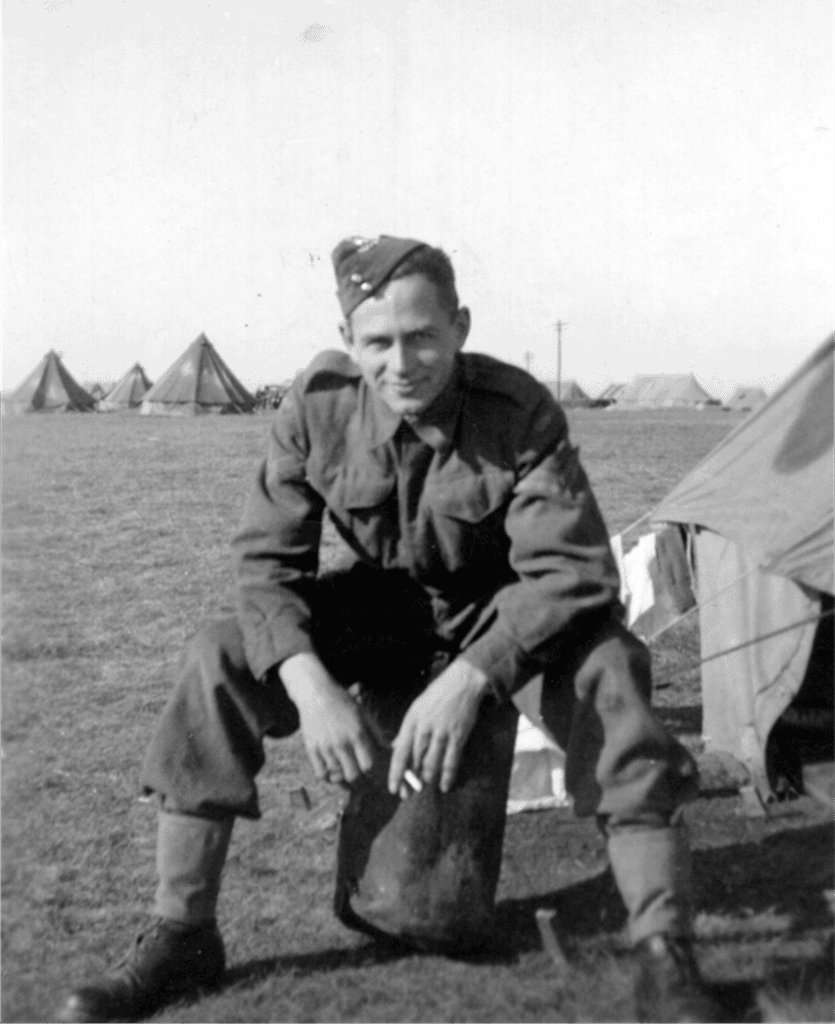
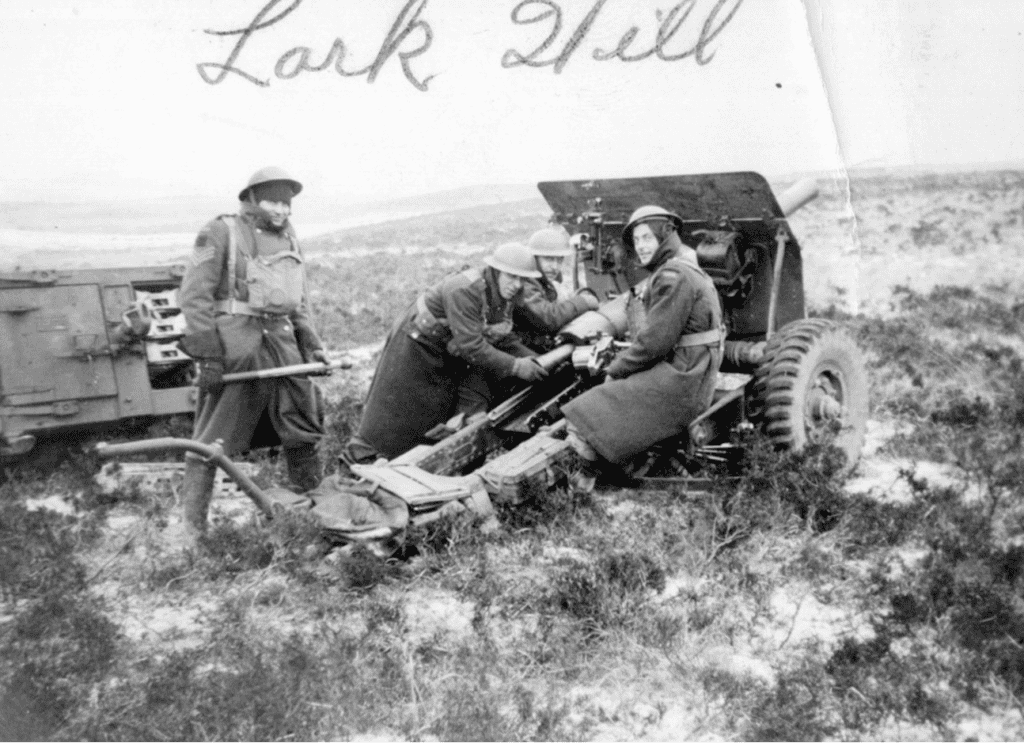
The photo above to the right is a first-rate example of Gunners training on the 25-pounder at Lark Hill in 1942. Bombardier Myles is on the right of the picture with the caption, “Sam in Action, Looks cold, eh? It damn well is.” Lark Hill is also on the Salisbury Plain, near Stonehenge. During WW2, the War Department used the area for artillery ranges, machine-gun ranges, and airfields. At the Lark Hill artillery ranges, the Canadian Field Artillery trained on 25-pounders and the Medium Regiments trained on 4.5 inch howitzers and 5.5 inch howitzers.
The photo to the right shows Canadian Gunners posing with the 25-pounder in 1942. Sam is second from the left in the image. Other Canadians would have had similar experiences at military training sites across the UK.

The 1st Canadian Infantry Division, including the 3rd Field Regiment, fought in Italy as part of the Eight British Army. Both Gunners were part of the 3rd Field Regiment fighting in Italy. Note the photo to the right of Gunners in Italy dated October 1944. By this time, after 15 months in the Mediterranean, the men were seasoned and accustomed to warfare. Canadians played a vital role in the liberation of Sicily from July to August 1943, then on mainland Italy from September 1943 to February 1945. The peak Canadian strength in Italy was 76,000 soldiers.
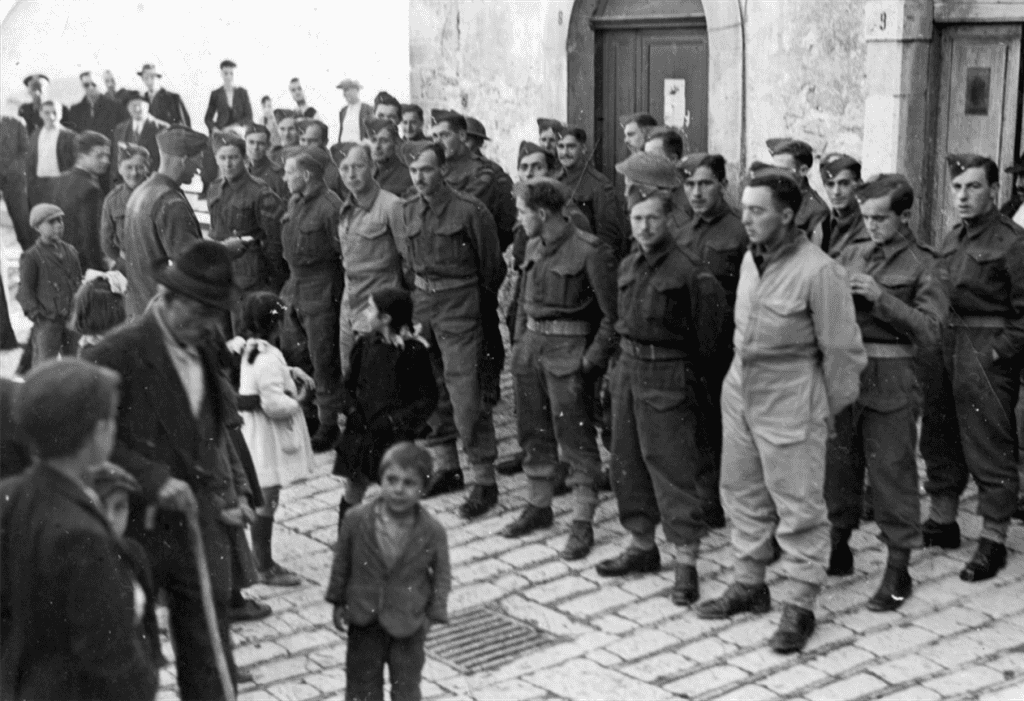
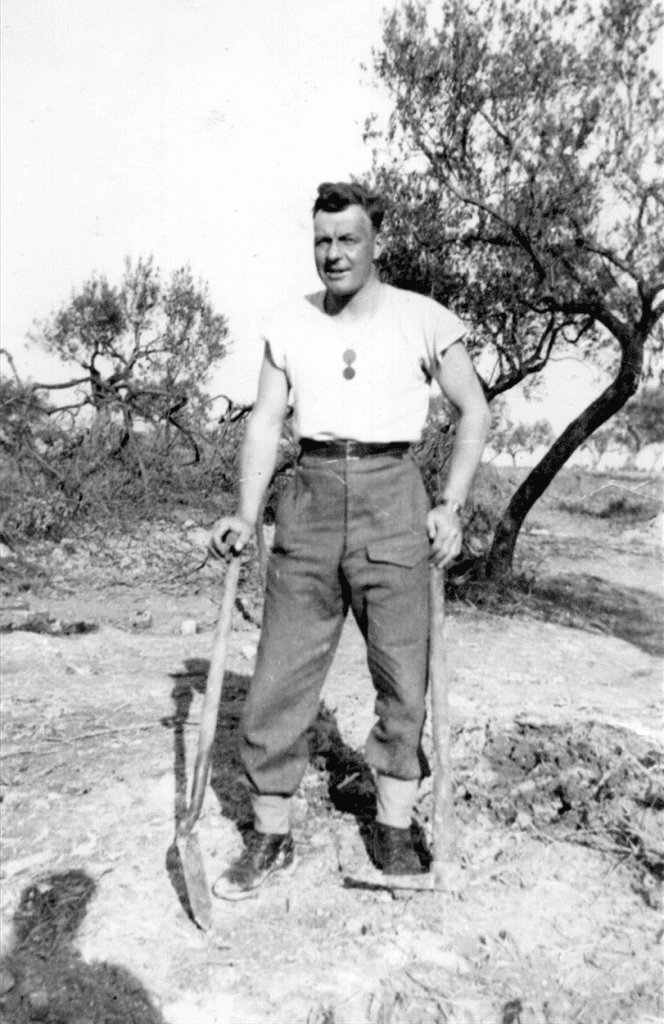
During Christmas 1943, Canadians fought bravely against the Germans, often with hand-to-hand combat, in Ortona, Italy. Note the photo to the left of Sgt Anderson in Ortona dated January 1944. Canadians fought in the streets and smashed their way through with 6-pounder and 17-pounder Anti-Tank guns. The Allies took Ortona on 28 December 1943; over 5,900 Canadians died in the Italian Campaign. In February 1945, the remaining Canadians, including the 3rd Field Regiment, moved to Northwest Europe, joining the First Canadian Army and driving into Holland and Germany.
After the Germans surrendered on 8 May 1945, the 3rd Field Regiments and many other Canadians were in Holland. The collection contains 1st Canadian Division Sports program, dated 6 July 1945, shown below. After the surrender, leadership did their best to keep soldiers busy, such as sports days in Holland. The program of events lists Bdr Myles, from Colborne, Ontario, representing 3rd Field Artillery in the One-Mile Relay and 440 Yard Dash. He finished 1st in the One-Mile Relay and 2nd in the 440 Yard Dash.
The now identified photo collection depicts significant events with the 77th Battery, 3rd Field Regiment and 1st Canadian Infantry Division. Both Jack and Sam stayed overseas for four-and-a-half years, first in England for two-and-a-half years, followed by Italy for eighteen months, and then Northwest Europe for six months, before going back to Canada. Many of their experiences overlap with other Gunners as authentic and meaningful stories. Jack’s collection of wartime photos provides valuable insight into the history of WW2 from a Canadian Gunner’s point of view.
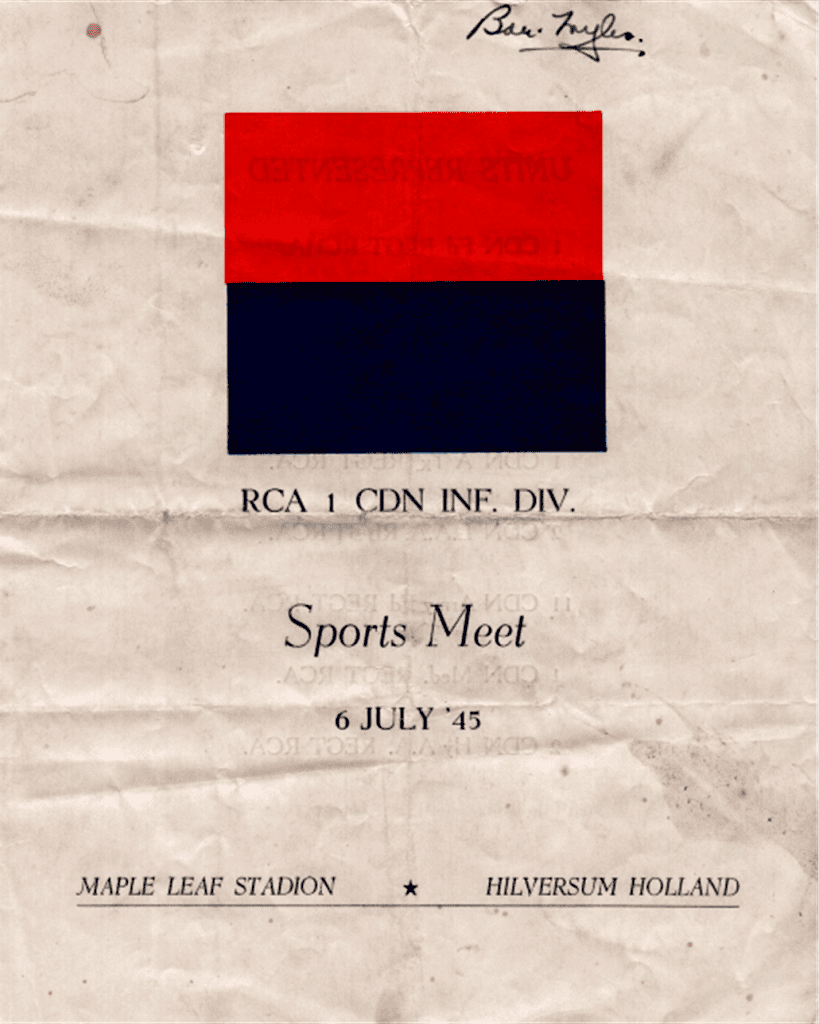
By Andrew Oakden
